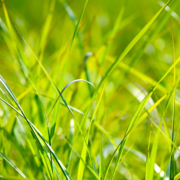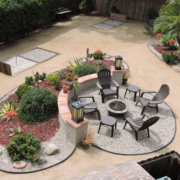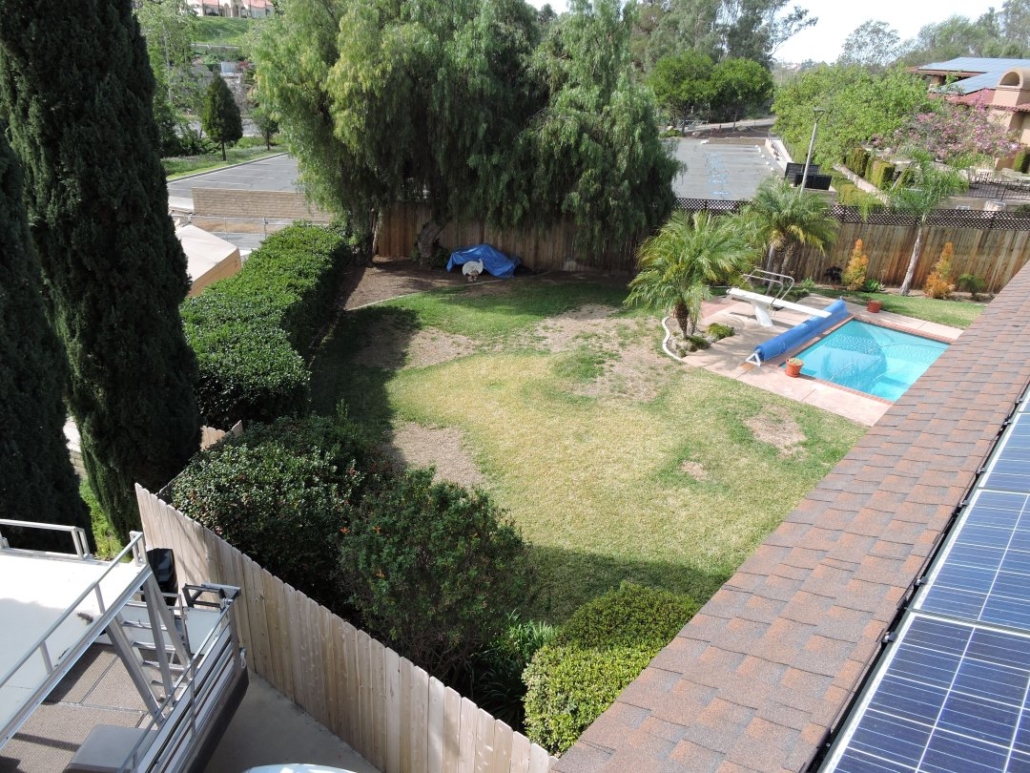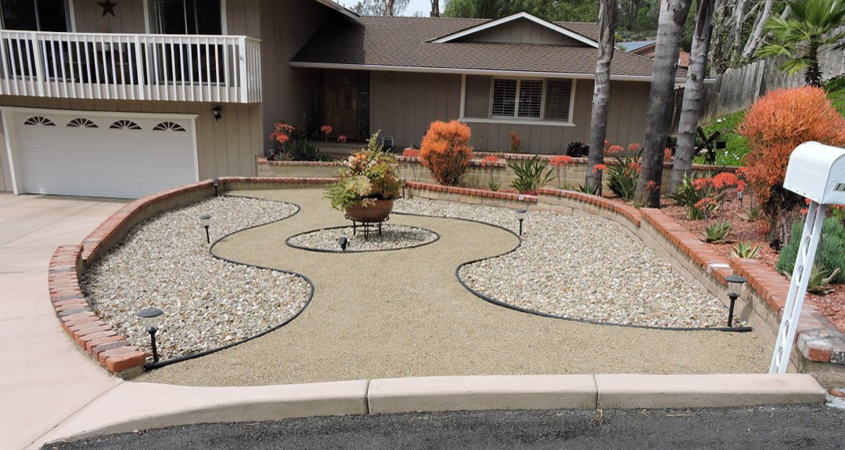Helix Water District has named Carey Hultgren and Paul Geldbach of La Mesa as the winner of its 2018 WaterSmart Landscape Contest, an annual competition that recognizes outstanding water-wise residential landscapes based on design and overall attractiveness, appropriate plant selection and maintenance, and irrigation methods.
This 1930s Spanish-style home on Dutton Lane sits on a 0.67-acre lot and now uses 40 percent less water than it consumed a few short years ago. Over the two-month billing period ending this April, this home used just 14 units of water. One unit is 748 gallons.
Hultgren and Geldbach purchased the property in 2012 and, at the time, the only landscaping was dead sod, dying trees and a swimming pool. Rather than trying to rehabilitate the thirsty lawn, Hultgren and Geldbach slowly transitioned their property into a colorful, complimentary, and climate-appropriate landscape.
Incredibly, the two completed the design, installation and maintenance of their Spanish oasis on their own. “Yes, it has taken us a long time! But I believe the extra time spent has been worth the money we’ve saved and the pride of ownership we gained in the process.
Free WaterSmart Landscape Makeover Program Jump Starts Winning Project
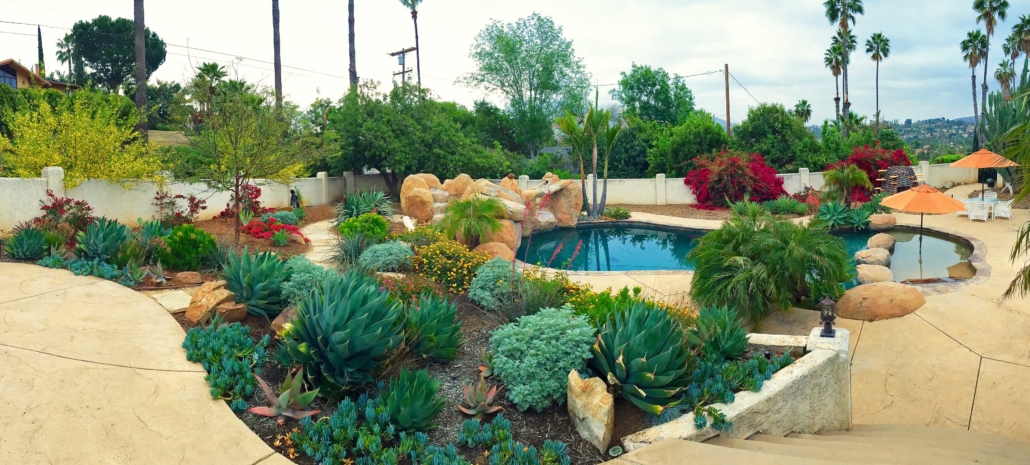
The new award-winning front yard landscaping. Photo: Courtesy Helix Water District
Hultgren attended the San Diego County Water Authority’s free WaterSmart Landscape Makeover Program in 2015 and within a few months they were ready to break ground. Since then, this do-it-yourself duo has completed a great amount of work.
“We’ve installed 26 water-wise trees and countless drought tolerant plants. We continue to refine and add to the landscape every spare moment we have,” said Hultgren.
The work first involved clearing the land with multiple truckloads of dead plant material and then rebuilding the sun-scorched soil. They hauled in over 40 yards of compost and mulch to provide the new plants with nutrients and help the soil retain moisture.
Next on the list was irrigation for the new plants. Fortunately, the old lawn had an irrigation system. The couple retrofitted the system with efficient rotating nozzles and avoided the expense and labor of installing a completely new system.
Lastly, the couple carefully selected, arranged and installed the colorful, low-water-use plants. Now that the plants are established, Hultgren and Geldbach can turn the irrigation system off from late fall to spring with nothing but the occasional hand-watering in between.
“In fact, we deeply watered the Palo Verdes along the driveway the first year to get their root systems established and we haven’t watered them or the 20 octopus agaves…for about one and a half years! This spring, the trees have thanked us with a spectacular flower show.”
Efforts Pay Off With Lowered Water Bill, More Colorful Landscape
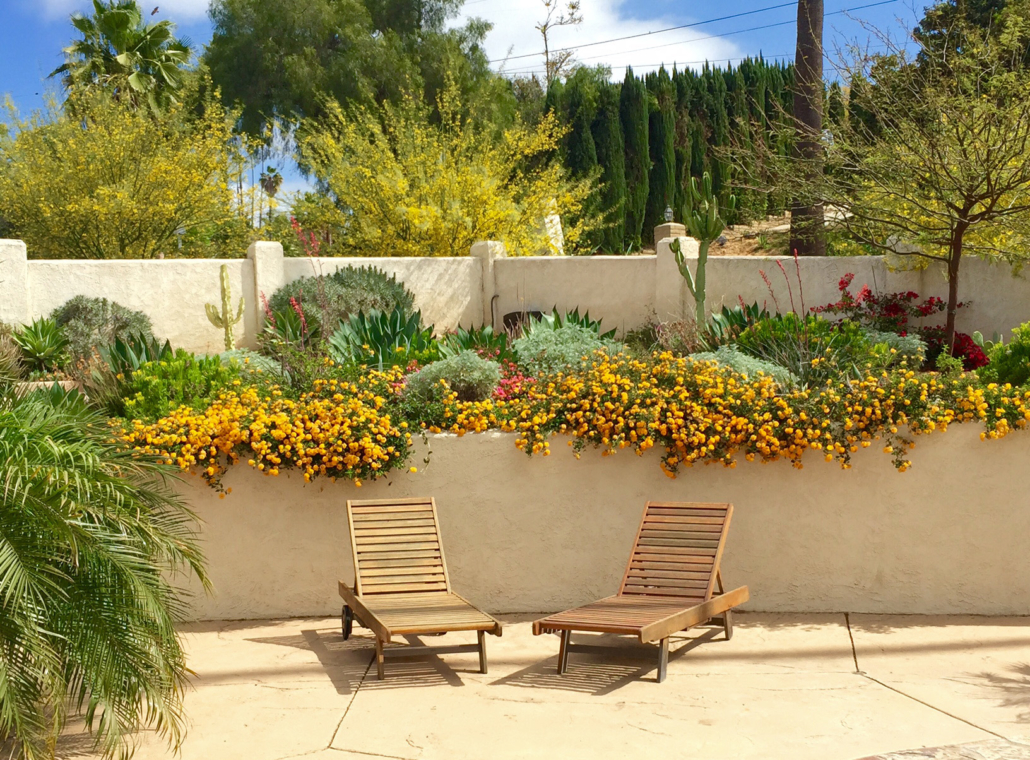
The pool deck after the renovation.
Hultgren and Geldbach wrote in their contest application that, “It’s gratifying to see that our efforts to conserve water with careful plant selections, irrigation retrofitting and mulch maintenance has been paying off with a lower water bill than some of our neighbors, plus a more colorful landscape.”
As this year’s winners, Hultgren and Geldbach will receive the following prizes – a $250 gift card, a certificate, as well as a WaterSmart Landscape Contest winner’s sign to display in their yard.
Photos of Hultgren’s and Geldbach’s yard will appear in the winners section at landscapecontest.com, along with Helix Water District’s past winners and the winners from other local water agencies. Helix will also feature the couple and their landscape at hwd.com, the district’s own website.
2019 WaterSmart Landscape Contest Submission Information Now Available Online
The 2019 WaterSmart Landscape Contest will begin around January next year and the deadline for submissions will be in late April. Look for information about the 2019 contest at hwd.com, Facebook.com/HelixWater and Twitter at @HelixWater.
Helix Water District is responsible for providing a safe and reliable water supply for more than 275,000 people living in La Mesa, El Cajon, Lemon Grove and parts of Spring Valley, Lakeside and unincorporated San Diego County.
-

-
The front yard prior to landscaping.
-

-
The new award-winning front yard landscaping. Photo: Courtesy Helix Water District
-

-
Water mature trees like this mesquite tree slowly and deep into its roots. Photo: Water Authority
-

-
The pool deck prior to renovation.
-

-
The pool deck after the renovation.
-

-
The old entry driveway.
-

-
The new look of the entry driveway.
-

-
The front yard overlook before landscaping.
-

-
The brand new, award-winning front yard.
-

-
Bold colors were used throughout.
-

-
A showstopping bouganvilla in hot pink.

